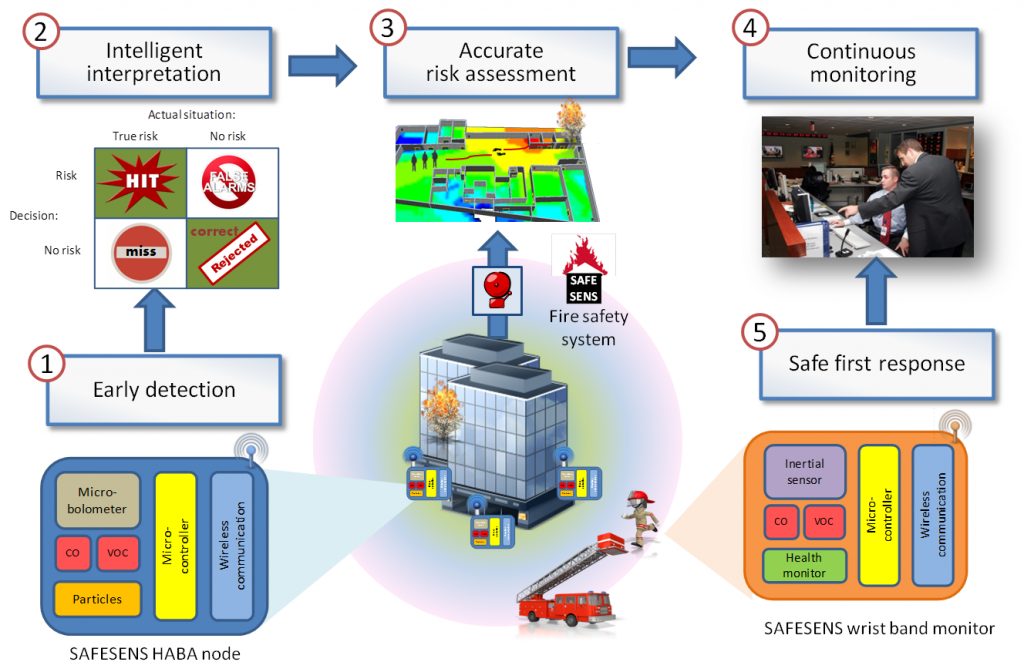SAFESENS will bring innovations beyond state-of-the-art into the application area of gas detection and monitoring systems, which are used as safety devices to detect fire events or to alert building occupants and safety workers about the potential danger of poisoning by toxic gas exposure, suffocation due to lack of oxygen and fire or explosion by combustible gases.
The current generation of fire detection systems is designed to respond to smoke, heat and gaseous emission. However these systems have the following drawbacks:
- Unreliable detection of early fires due to the fact that smoke and heat are detected and these become apparent relatively late during the fire life cycle.
- High rate of false alarms due to the fact that decision is based on only two or three parameters in combination with cross-sensitivity.
- Large form factor due to the lack of co-integration at package-level.
- High cost due to technology choice, mainly optical.
- No information available on other fire parameters: toxic fumes and oxygen levels which is especially relevant for fire fighters.
- No information available on the presence and location of people which is especially relevant during rescue operations.
Figure illustrates this concept in an indoor fire situation. (1) A home and building automation (HABA) sensor node is able to early detect fire thanks to its multiple gas sensing capabilities. (2) Gas and presence sensor data is processed by data fusion algorithms able to intelligently interpret the current safety risk level. (3) System-level algorithms provide an accurate safety risk assessment of the building by means of fire propagation and people occupancy maps. (4) Fire and occupancy data is updated on real-time for continuous safety risk monitoring at the central alarm centre. (5) First responders are able to safely evacuate the building as wearable electronics constantly monitor their vital signs and indoor locations.

SAFESENS addresses the challenges of the call by enabling technologies for trust, security and safety with the particular development of embedded sensor technologies for security and safety. By co-integrating multiple gas and presence detection technologies SAFESENS will also address competitiveness through semiconductor process differentiation and create opportunities in System-in-Package. In addition, the project has links to the home healthcare domain as the addition of multiple gas and presence detection technologies in fire sensors will improve the monitoring of people in their homes.
SAFESENS will demonstrate and validate the developed sensor technologies under two demonstrators: (1) a fire safety system composed of multiple wireless gas and presence detection sensors and (2) a multimodal wristband able to monitor first responder vital signs and indoor locations. The final SAFESENS demonstrators will perform early detection of fire (~5× faster), reduce the number of false alarms to less than 1 %, provide a form factor of ~1 cm3 and reduce power consumption by a factor of 10. In addition, the demonstrators will be able to provide building occupancy maps and first responder locations for facilitating rescue operations.

